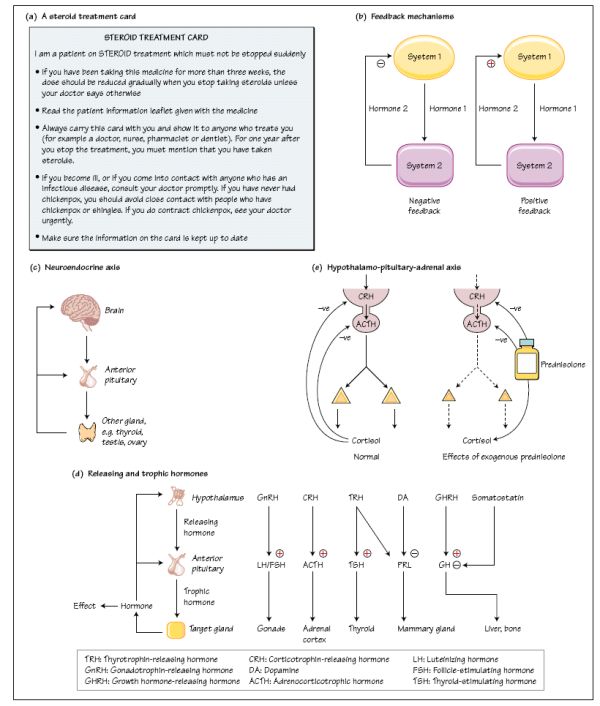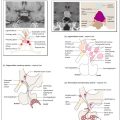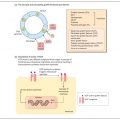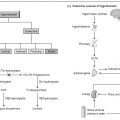
Glucocorticoid therapy is widely used to treat a variety of chronic inflammatory disorders. Mrs A.A. is a 69-year-old lady with long-standing rheumatoid arthritis. For the last 5 years she has taken oral prednisolone in a dose of 10 mg daily. She has developed some thinning of the skin and bruises easily, features which her doctor tells her are side-effects of the treatment. She knows that if she develops a minor illness she should increase the dose of her prednisolone for a couple of days and she carries a steroid card with her at all times (Fig. 7a). She also knows that if she starts vomiting for any reason she needs to seek urgent medical attention.
In the normal state, glucocorticoids are released in response to stress, such as illness. Therapeutic doses of glucocorticoids inhibit the normal hypothalamo-pituitary-adrenal feedback axis so that this stress response cannot occur. A patient such as Mrs A.A. relies entirely upon her fixed daily dose of prednisolone to supply her glucocorticoid requirements. If she develops a minor illness she needs to increase the dose of the tablets and if she is vomiting, needs to seek medical help so that glucocorticoids can be given intravenously. In the event that she stops taking glucocorticoids, she has to taper off the treatment gradually so as to allow the suppressed hypothalamo-pituitary-adrenal axis to recover normal function.
Living systems possess their own internal environment, which has to survive within an external environment. Survival involves the maintenance of a fluid and salt balance, a tight control over temperature in the case of homoeotherms, and also over the regulation of chemical availability and utilization within the cell. Poikilotherms, for example some reptiles, whose temperature is set by the external environment, are more dependent on their external environment for maintenance of an adequate metabolism.
Stay updated, free articles. Join our Telegram channel

Full access? Get Clinical Tree








